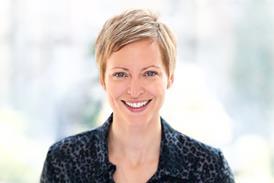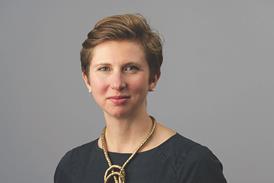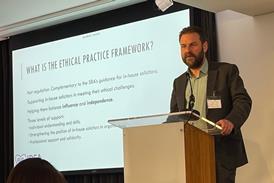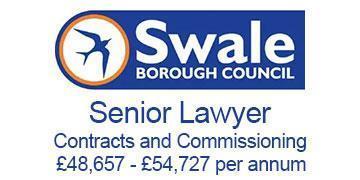Barristers are busier than ever, reports Catherine Baksi. But with huge disparities in the rewards on offer and practitioners reporting increasingly divergent experiences, the profession is polarising
The low down
When the Legal Services Act landed on the statute book in 2007 the Bar Council searched for a positive line on the act’s liberalisation agenda. The reforms were a ‘marketing opportunity’, it decided. Vicars with small Sunday congregations say the same of Christmas. Yet the bar, in practice the least affected constituency of the legal profession, has grown 20% since then and numbers continue to rise. The commercial bar in particular goes from strength to strength. Times are harder at the criminal and family bar, where practitioners have dealt with the fallout of decades of underfunding. Issues like harassment and bullying persist at the bar, while promising embryonic careers can be held back by senior barristers coming to chambers less often.
The Bar Council is keen to recite the mantra that the near-18,000 barristers in England and Wales constitute ‘One Bar’. That insistence on professional unity is shared by an unprecedentedly diffuse solicitor profession, and being smaller by number, it is arguably easier for barristers to have a common professional experience.
Yet there are huge differences between the bar’s many practice areas. The biggest divergence is between those who undertake publicly funded work, like crime and public law family cases, and far better-paid colleagues with commercial and arbitration practices.

Busy briefs
Circuit leaders and specialist bar associations report that barristers are generally busy – some too busy, and as a consequence at risk of burning out.
Like their solicitor peers, barristers are grappling with court delays, navigating the supposed benefits of artificial intelligence (AI), and working out how to provide the required support and training to juniors when working from home has increased substantially.
‘The justice system is still running on empty,’ says Barbara Mills KC, chair of the Bar Council. To a degree, she says, ‘the state of the bar reflects the state of the justice system as a whole. The publicly funded bar and those working across civil, family and criminal law continue to find themselves in challenging and difficult circumstances’.
The ‘frontline workers’ at the publicly funded bar, Mills adds, ‘go to work and see the practical implications of decades of underfunding – the backlogs, the crumbling courts, and the inefficiencies’. That inevitably takes its toll.
Although the ‘chronic delays and crumbling courts’ have mostly not affected high-end commercial cases, Mills stresses: ‘To be properly functioning, the whole justice system needs to be resourced and restored so we can maintain the long-standing and attractive international reputation we are all proud of.’
She warns that the country’s current position as a global centre for commercial litigation and legal services ‘is at risk if the justice system is allowed to deteriorate further’.
Growth
Over the past decade the bar has grown by 15%. In 2015 there were 15,528 barristers, with the majority (12,504) in self-employed practice and 2,814 employed. According to the most recent Bar Council figures that has grown to 17,933, of whom 14,398 are in private practice and 3,040 are employed. (The remainder in both cohorts are ‘dual capacity’, undertaking a combination of employed and self-employed legal work.)
For this growing number, a question: how are they? The Bar Council’s 2024 wellbeing survey recorded that 24% of barristers who responded reported low psychological wellbeing. Almost half (49%) said they were managing their workloads well, but nearly a third (31%) indicated they were not coping.
Women, barristers from an ethnic minority background, and those who are younger and more junior reported lower overall wellbeing. Across practice areas, barristers working in family law had significantly lower wellbeing compared to all other areas, except for the criminal bar. Unsurprisingly, perhaps, barristers at the commercial bar reported the highest level of wellbeing.
Notably, 44% of respondents had experienced or witnessed bullying, harassment or discrimination in the previous two years – an increase on the previous survey results. This led the Bar Council to commission Labour peer Harriet Harman KC, former solicitor general, to carry out a review and propose changes.
Publication is expected later this year. Speaking at the Bar Council’s conference in June, Harman highlighted the need for an end to the ‘culture of excuses’ and ‘zero tolerance’ of misconduct by barristers. Better systems for reporting complaints are required that transfer the ‘jeopardy’ or repercussions from victims to perpetrators, she added.
Mills acknowledges how difficult it is for complainants to come forward and report inappropriate behaviour. She is ‘committed to changing attitudes to accessing support’ and encourages barristers and chambers to do so.
Recruitment buoyant
Despite the hurdles encountered by some barristers, recruitment remains buoyant, with more students applying for pupillages than there are places.
The vast majority of new barristers report a positive pupillage experience. The Bar Council’s annual survey of pupils, answered by 170 (roughly 30% of the total) and published in June, shows that 90% had an overall positive experience and 80% felt well supported by chambers or their employer.
Less positively, 88% said their stress levels were ‘moderate’ or ‘high’, due to excessive, last-minute workloads, poor scheduling and the lack of a work-life balance. They also told researchers that health concerns and caring responsibilities were made more difficult by inflexible working conditions and unclear sick leave policies.
On the upside, reports of bullying, harassment and discrimination were lower among pupils than they are across the bar. One in six pupils (17%) said they had ‘personally experienced’ one of those behaviours, rising to 28% when including ‘observation’ of bullying, harassment and discrimination.
Just under a third (32%) said they would ‘definitely’ recommend becoming a barrister.
Pay woe as agency reels from cyber-attack
A cyber-attack in May on the Legal Aid Agency (LAA) potentially disclosed personal data of thousands of applicants, including their contact details and addresses, dates of birth, national insurance numbers, criminal history, employment status, and financial information such as contribution amounts, debts and payments. In response the agency closed its payment system, causing havoc for barristers and solicitors who could not be paid.
The situation, says Barbara Mills KC, chair of the Bar Council, has caused a ‘logistical nightmare’ for barristers and chambers. While money is now being paid to them from the agency, chambers are not told which barrister it is for. Barristers are struggling to pay contributions for chambers that cover essential costs such as staff and electricity.
A new ‘identity access management solution’ replacing the portal, Sign in to Legal Aid Services, is scheduled to go live next month.
Until then, the LAA says it is working to restore core systems and services including the benefits checker as a priority. But these will not return before September. Services will come back in phases and further updates will follow. A contingency payment scheme has been set up, making average monthly payments, excluding VAT.
Officials state that all criminal claims, including Very High Cost Cases and Interim Fixed Fee Offer payments, are currently being paid within the published target of ‘payment in a month’. Barristers are included in the average payment for civil representation scheme, as are solicitors.
If practitioners do not have an average payment figure, or otherwise believe that the amount is insufficient, there is an ‘escalation process’ to allow them to claim a more specific sum. A multi-user access feature enabling third parties, such as costs draftsmen, to work across multiple firms using one account, will be available in due course. James Roberts, chair of the Family Law Bar Association, says the contingency scheme is ‘inadequate and causes its own set of problems for chambers and for barristers’.
Lachlan Stewart, Young Barristers’ Committee chair, says the cyber-attack has been particularly disruptive for pupils who do not have prior earnings to fall back on.
Apologising for the disruption, an LAA spokesperson tells the Gazette: ‘We understand the difficulties this is causing, and whilst a payment contingency is in place for civil legal aid providers, including counsel, we are working as quickly as possible to restore online systems for civil work.’
She adds: ‘Criminal legal aid providers, including counsel, are able to upload their claims in the normal way and are being paid for work done within agreed timeframes.’
Criminal bar
The vicissitudes of the criminal bar have hit the headlines in recent years, due to the backlog of almost 77,000 Crown court cases and following its strike action in 2022. The strike led the government to increase legal aid fees, which had remained static for over two decades. Many juniors had left the criminal bar because they could not make a living.
Despite the fee increase, and citing stress and working conditions, a national survey of members by the Criminal Bar Association (CBA) this year showed that one in three is actively considering leaving the bar, while another third are considering moving to a different field of law.
As the courts seek to tackle the backlog of cases, those criminal barristers who remain in practice are at full stretch. While that means that they are earning more money, it comes with a risk of burnout and some are struggling to cope with the workload. Yet, says Gary Brown, president of the Institute of Barristers’ Clerks, ‘there is little sympathy from the judiciary and court admin staff’.
Crown courts, Brown observes, are listing too many cases for the number of barristers available to do them, often resulting in cases remaining in lists without a prosecution or defence advocate. A better approach, he suggests, would be to liaise with the bar and barristers’ clerks to see which cases would likely resolve without a trial and get those listed.
Proposals to reduce the right to jury trial, suggested by Lord Leveson in his recently published report, and have matters dealt with by a single judge or by an intermediate court with a judge and two magistrates, look set to drive more criminal barristers away.
CBA chair Mary Prior KC tells the Gazette that there is ‘substantial opposition’ to removing trial by jury for serious crimes. She points to a recent snap survey of members suggesting that 44% would cease practising criminal law if this occurred.
According to the survey, younger barristers are most likely to leave – 58% of those in their first five years of practice and 54% of those with six to 10 years’ experience.
Prior stresses that those who stay will not be able to cover all the cases that remain and the backlogs will increase. She believes the reforms would also deter pupils from joining the criminal bar.
Lachlan Stewart, chair of the Young Barristers’ Committee (YBC), asks: ‘Will it mean less work in the Crown court for “junior-junior” barristers? How will this impact our progression? How does this fit with the real hiring push to recruit more criminal barristers? Will it mean solicitors keep more cases in-house?’
There are regional variations in the Crown court backlogs and the proposals are causing concern on those circuits where delays are less of a problem. ‘Why should a defendant in Liverpool be denied a jury trial because of a backlog in Snaresbrook?’ says Jaime Hamilton KC, leader of the Northern Circuit.

Family and personal injury
At the family bar, meanwhile, despite long delays to cases, barristers are ‘intensely busy’, says Brown, especially those doing public law care proceedings.
The biggest issue for them, says Family Law Bar Association chair James Roberts KC, is the fallout from the cyber-attack on the Legal Aid Agency in May, which has caused huge disruption to payments (see box, above).
Clinical negligence remains a ‘vibrant’ practice area, says Anthony Searle, secretary of the Professional Negligence Bar Association. But he warns of ‘persistent and emerging pressures’ that ‘risk undermining morale and recruitment’.
While there is no shortage of cases, some tasks have shifted back to solicitors and ‘stagnant’ fees pose a financial challenge, says Searle.
Looking ahead, he predicts further difficulties due to the ‘inevitable introduction of guideline hourly rates for counsel’, raising concerns that complex clinical negligence work will be equated with routine personal injury claims, and the likely extension of fixed recoverable costs to low value claims.
Public law is a growth area of work, and one that is attracting pupils. Judging by attendees at July’s Administrative Law Bar Association conference, morale among constitutional and administrative law barristers remains ‘buoyant’, according to its vice-chair Richard Honey KC.
Recent fee rate rises for those on Government Legal Department panels, the commitment to review rates regularly and work to increase diversity, Honey notes, have had a positive impact.
Remote working
Circuit chairs report high levels of support and camaraderie, despite the difficulties faced around the country.
But the practice of working from home and attending virtual online hearings, which was forced on barristers and solicitors during the pandemic, has continued – with mixed results.
'The job of a barrister is amazing in many ways, but it can be solitary and stressful'
Lachlan Stewart, Young Barristers’ Committee chair
While reducing the time and expense of travelling, helping barristers with caring responsibilities, it has made life more isolated for some, says Stewart. The trend has particular downsides for junior barristers at the start of their careers, limiting their exposure to senior members and inhibiting their professional development.
‘The job of a barrister is amazing in many ways, but it can be solitary and stressful,’ says Stewart, adding that spending less time with others as part of their working day ‘can exacerbate feelings of isolation’.
To address this, circuits and chambers are making conscious efforts to organise events and training to bring barristers, especially juniors, together, reports Claire Davies KC, leader of the South Eastern Circuit.
On an upbeat note, Jason Pitter KC, leader of the North Eastern Circuit, reports an upturn in barristers being instructed. Aside from the high volumes of work due to the backlogs, he suggests that this reflects a high quality of advocates outside London gaining greater recognition.
In particular, he notes growth in business and property matters, professional misconduct, inquests and public inquiries, including cases of national importance.
Efforts to increase the profile of the circuit, including the first Pupillage Fair (North) have ‘showcased’ the benefits of life at the bar ‘up north’, says Pitter, contributing to increased recruitment.
One consequence of increased working from home is that several chambers have reduced the size of their premises, says Brown. His own set, 3TG, moved out of its Inner Temple premises during the pandemic.
Some sets, like Libertas Chambers, have gone fully virtual, while others have left the Inns of Court for larger or more modern premises than the old buildings can offer.
Brown stresses too that the Inns of Court now see themselves as ‘true commercial landlords’ and no longer as servants of the bar. Property is freely rented to non-legal businesses.
Career-wise, barristers have tended to remain in the one set. Now it is becoming more common for them to move sets, join law firms or work in companies or for government agencies like the Crown Prosecution Service or Serious Fraud Office.
‘I lost two real stars, who were headhunted by two commercial firms,’ Brown relates. Chambers, he notes, cannot compete with salaries, paid holidays and other benefits that are particularly attractive for women looking to have children.
Amelia Clegg, vice chair of the YBC, is employed as an associate at the law firm BCL Solicitors. She identifies an issue which the bar is at the start of tackling – the place of AI in their work and in the justice system. She wonders whether it ‘is a help or a hindrance’, highlighting the recent case in which the High Court criticised a barrister and her instructing solicitor for citing five authorities that did not exist. In light of the case, the Bar Council is updating its guidance on using AI.
That was a humiliation for the lawyers involved. But many barristers took comfort from it. The errors are an argument for the value of the knowledge, critical thinking and in-person experience they bring to legal practice. The bar may seem to lean for authority on the dated trappings of wig, gown, hall and antique forms of address, but it is the software products of T-shirt wearing ‘tech bros’ that produce such errors.
Catherine Baksi is a freelance journalist and qualified barrister































1 Reader's comment